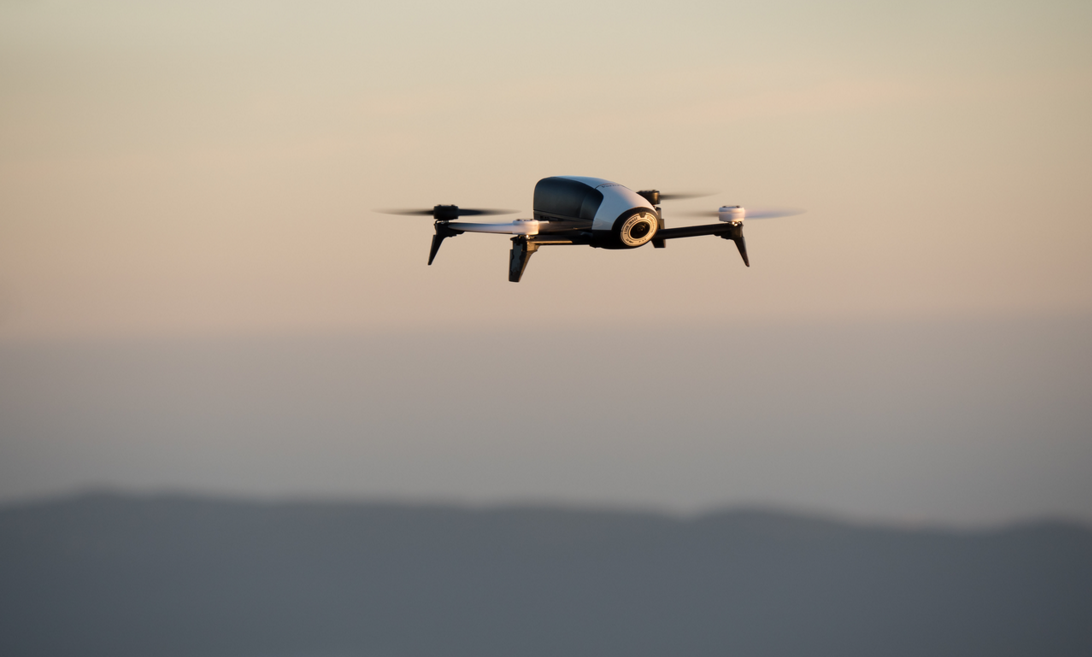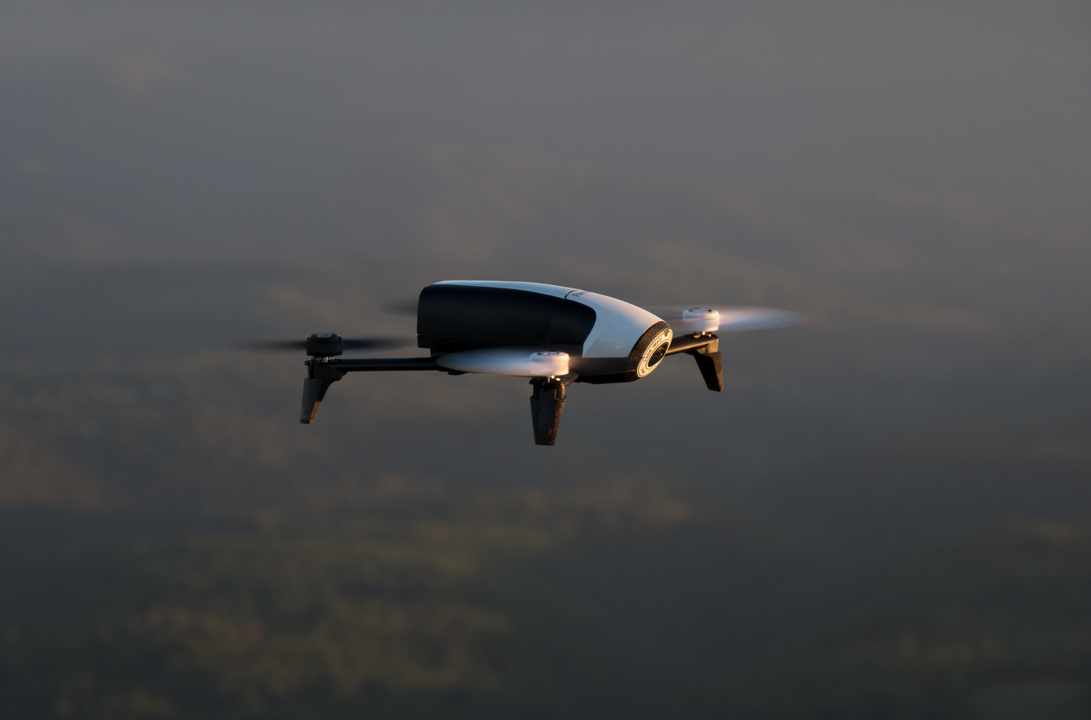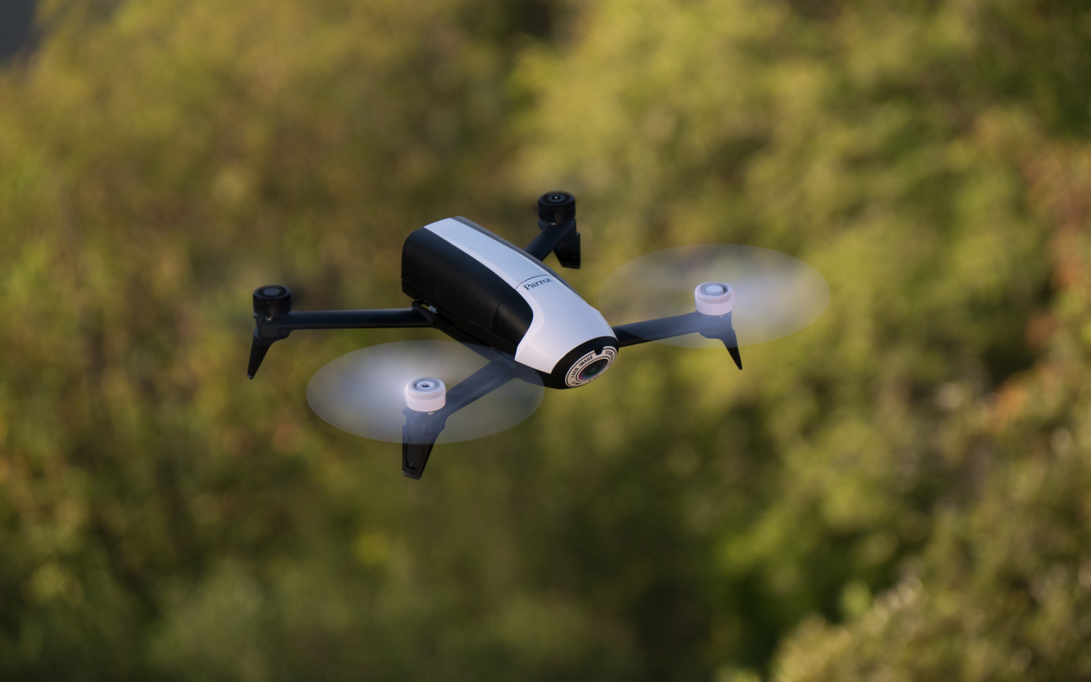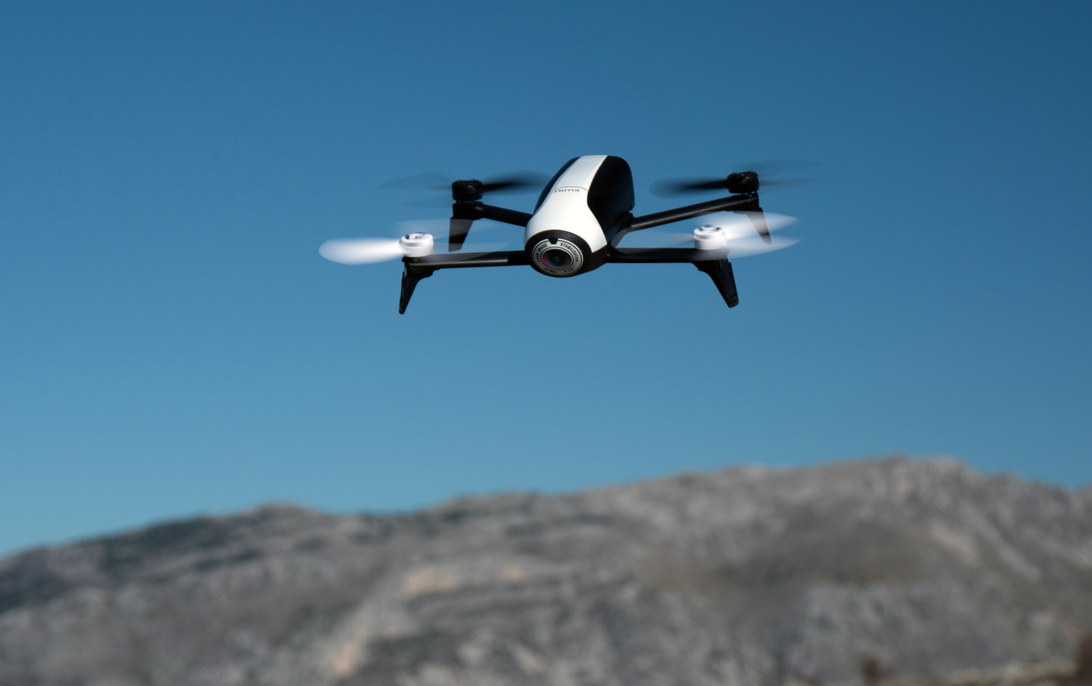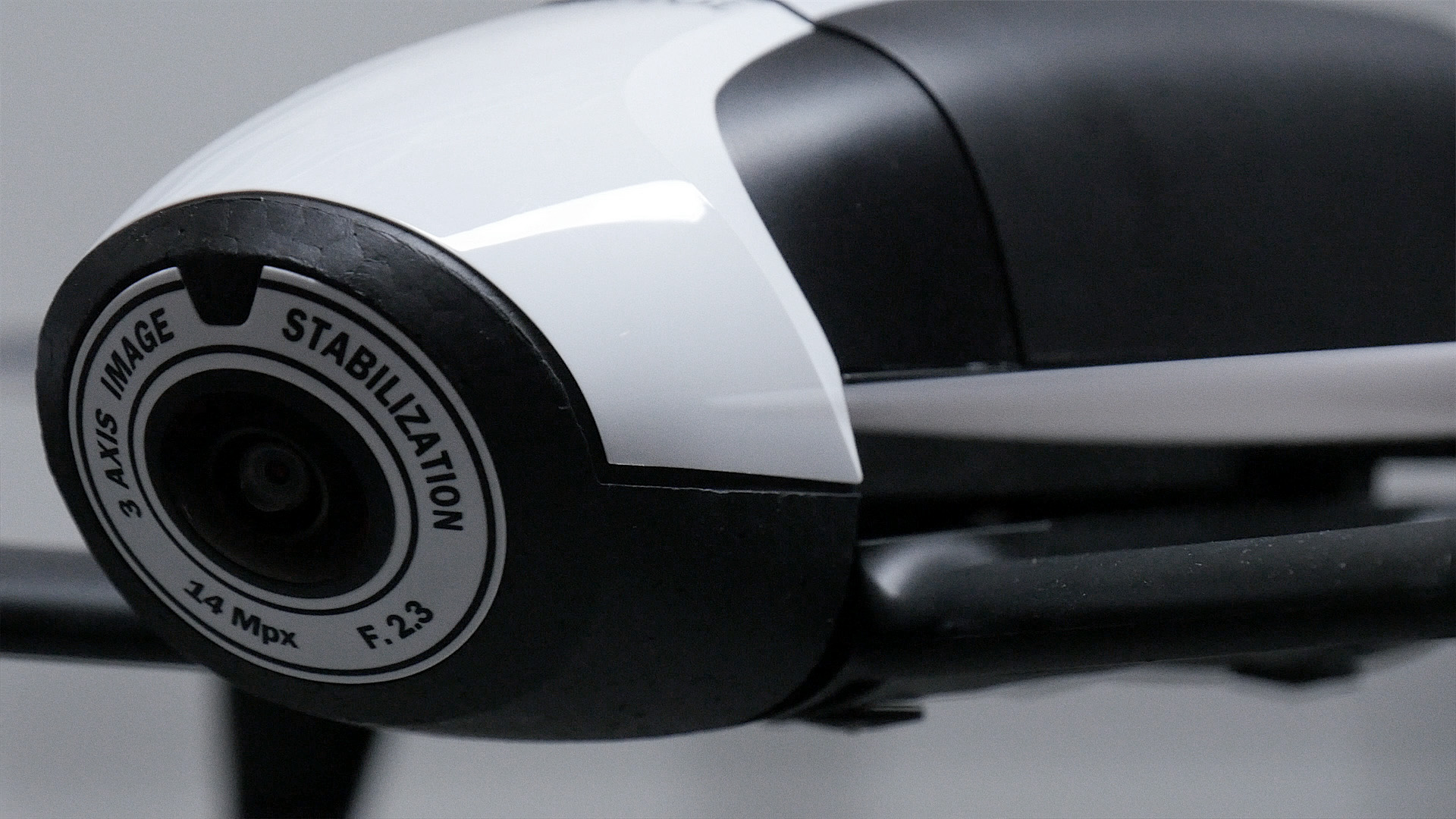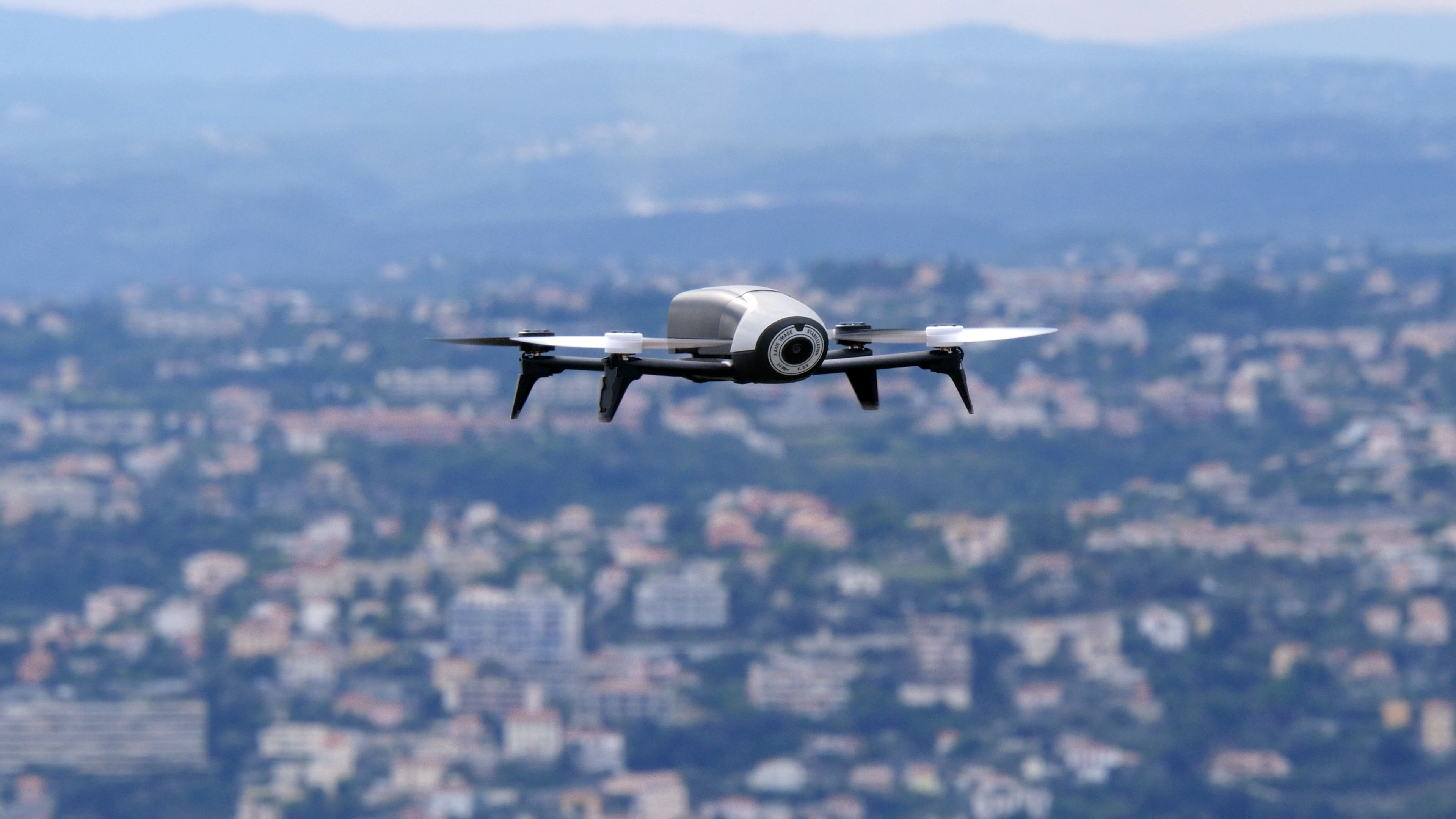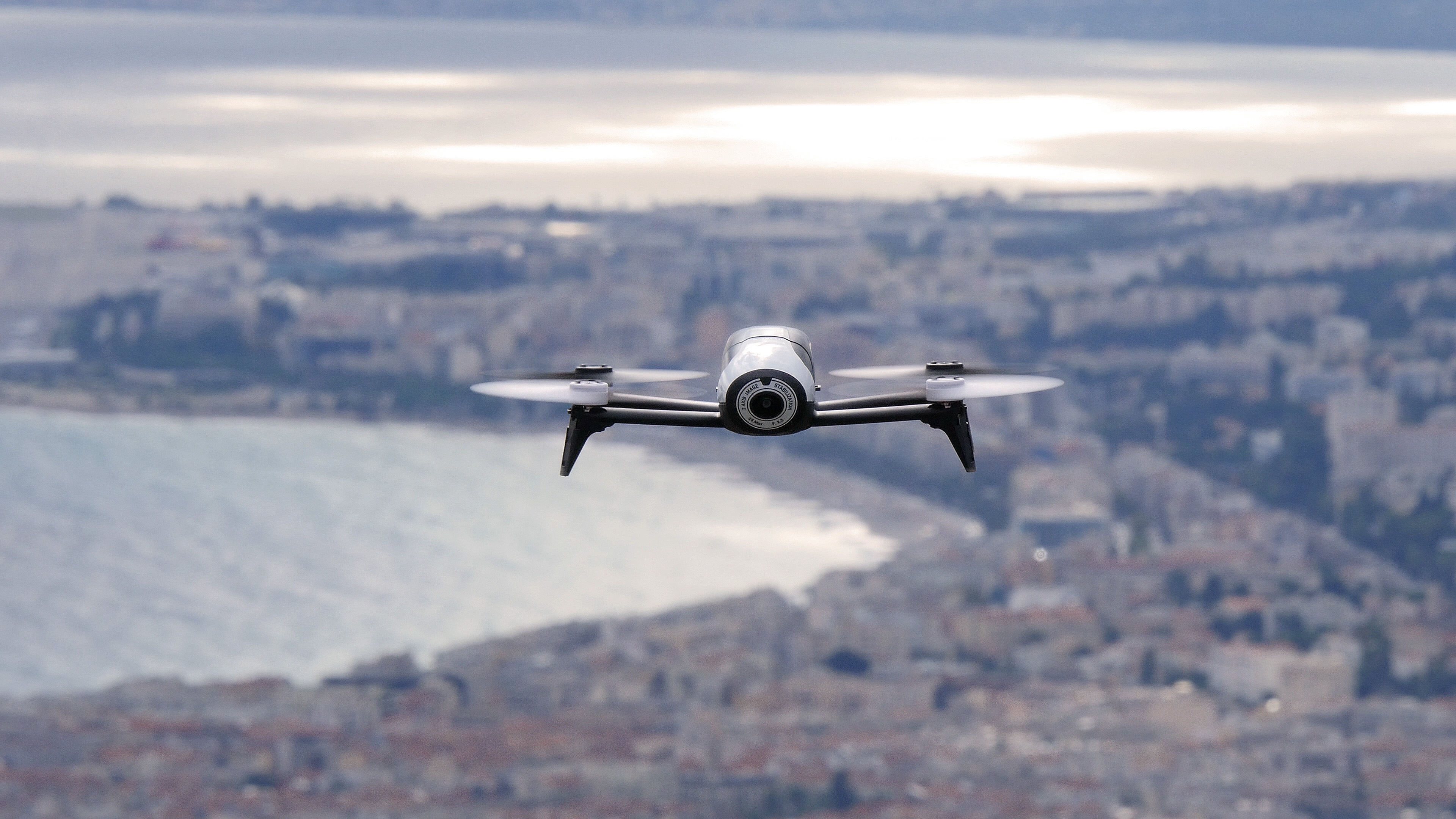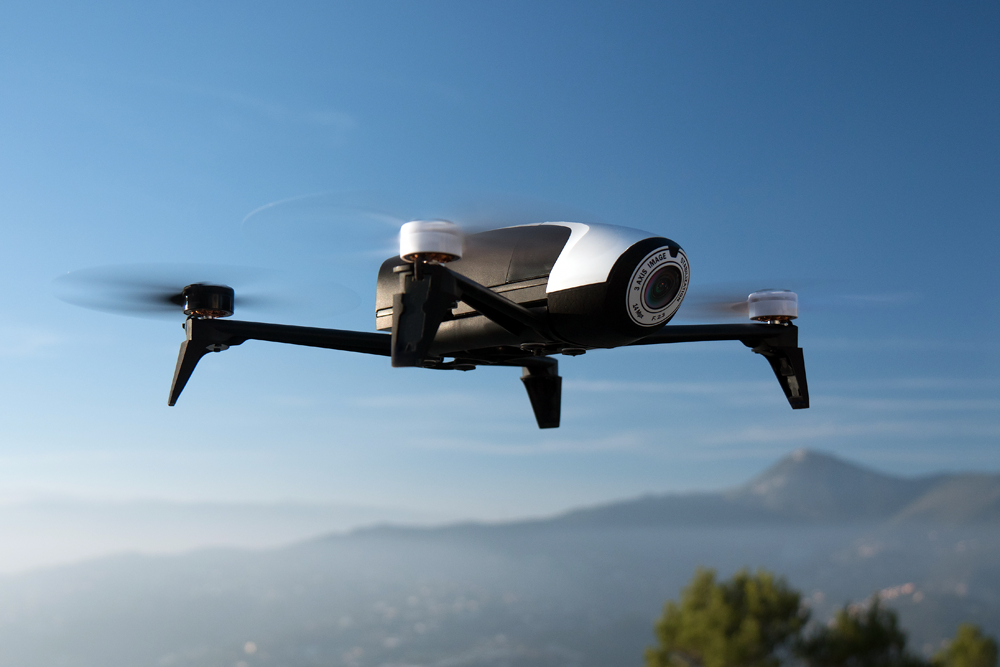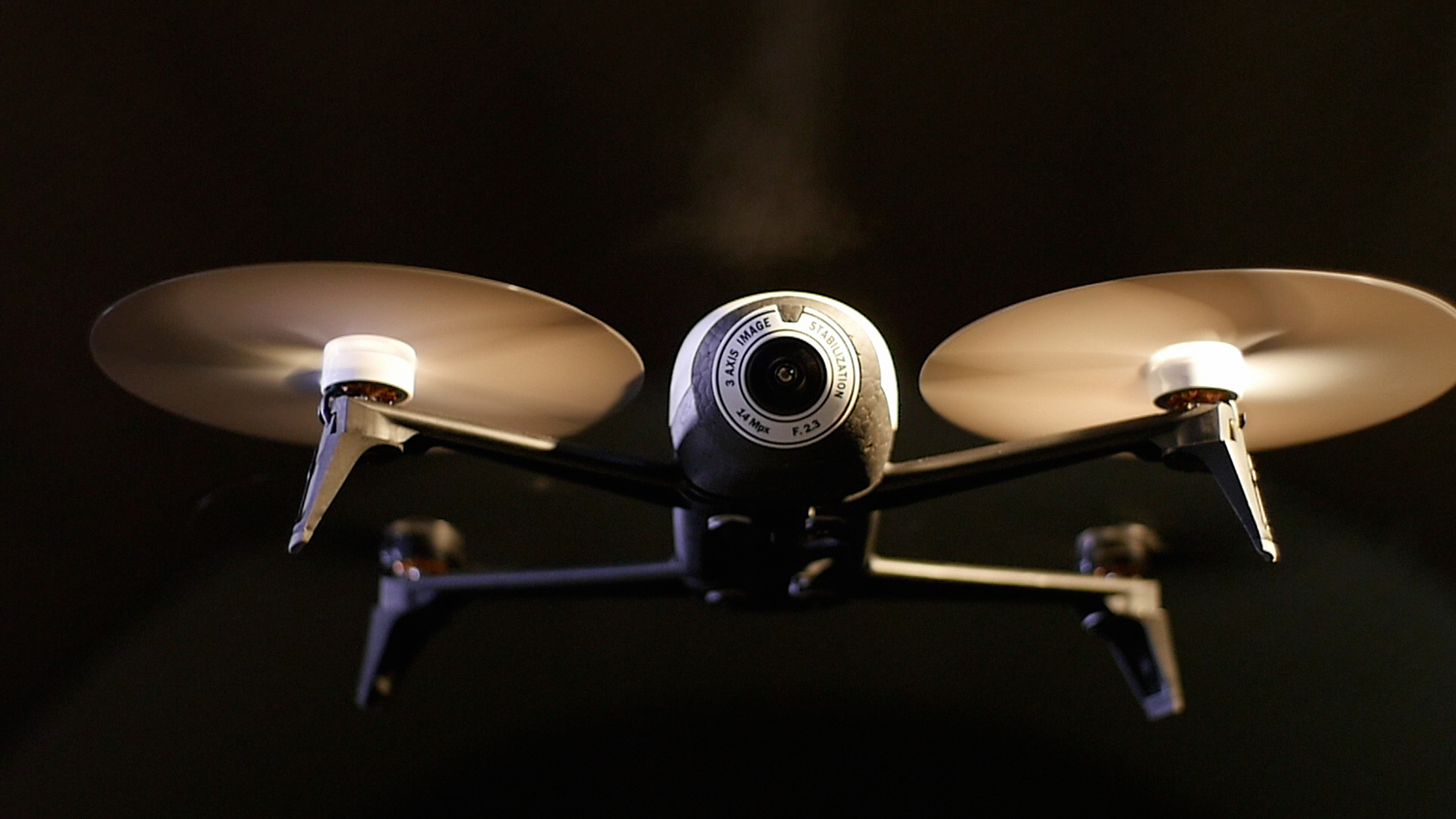When it comes to flying the Bebop 2, Parrot calls the operation a very easy process which requires “no learning.” Essentially, the craft’s wide array of sensors make piloting the Bebop 2 a foolproof experience — even for beginners. With built-in gyroscopes, pressure sensors, stabilizers, and GPS; the drone’s onboard computer constantly analyzes its own position to ensure stability. Moreover, an included landing button automatically brings the Bebop 2 safely back to ground regardless of its altitude.
Outside of the typical features included in the Bebop 2, Parrot also announced the return of its drone-enhancing remote control called the Parrot SkyController Black Edition. Use of the optional remote allows pilots to fully control the drone with a two-handed controller (essentially two joysticks) with video streaming through a compatible smartphone or tablet attached to the remote. Downloadable on either iOS or Android-capable devices, the required FreeFlight 3 application lets operators see exactly what the drone sees.
In an effort to make the drone even more immersive, Parrot outfitted the controller with an HDMI port which allows users to plug in FPV (First Personal View) glasses, which simulate what it would be like to actually sit inside the Bebop 2. Live telemetry information feeds directly into the FPV goggles, while an included “Radar” feature allows FPV wearers (or those controlling the drone) to see exactly where the craft is in relation to the controller.
Parrot has announced that the Bebop 2 will be available for purchase as two different versions starting December 14. The first version — a standard Bebop 2 drone and all necessary accessories — will run for just $550 upon launch, while the advanced version — a standard Bebop 2 drone and the Parrot Skycontroller — will be on sale for $800.
